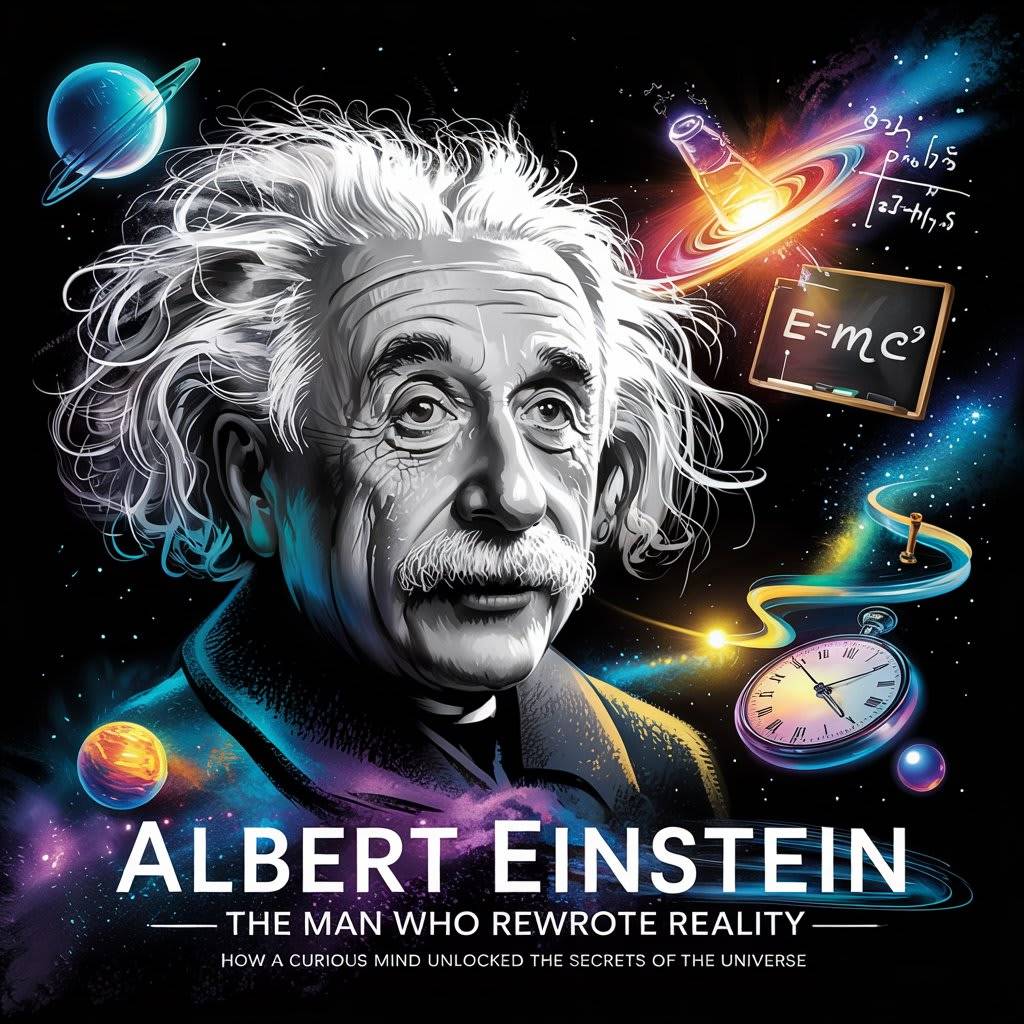In the small German town of Ulm, on March 14, 1879, a child was born who would one day bend the fabric of reality with his mind. He didn’t speak fluently until the age of four. His teachers considered him slow. But this quiet boy, Albert Einstein, would grow into a figure who would redefine how humanity understands time, space, and the very structure of the universe.
As a child, Einstein was fascinated by the invisible. A simple compass given to him by his father filled him with wonder. Why did the needle always point north? What force was acting on it? This mystery lingered in his young mind, sparking a lifelong obsession with unseen forces that rule the world.
Einstein’s school years were marked not by excellence but by rebellion. He disliked rigid teaching methods and rote memorization. He preferred thinking freely, often ignoring subjects he found boring. His curious nature didn’t fit neatly into the educational system, but he devoured books on mathematics and physics outside of class. By his teenage years, he was already thinking beyond the limits of traditional science.
In 1905, while working as a clerk at the Swiss Patent Office, Einstein had what is now known as his Annus Mirabilis — his “miracle year.†He published four groundbreaking papers that would transform physics forever. One paper explained the photoelectric effect, which later earned him the Nobel Prize. Another introduced the theory of special relativity, redefining how time and space relate to each other. He also proposed the revolutionary equation E=mc², revealing that energy and mass are interchangeable. That one line would one day lead to both nuclear power and nuclear weapons.
But Einstein didn’t stop there. Over the next ten years, he worked relentlessly to expand his ideas into something larger. In 1915, he presented the General Theory of Relativity, a breathtaking leap forward in understanding gravity. While Isaac Newton had seen gravity as an invisible force pulling objects together, Einstein saw it as the warping of space and time itself by massive bodies like stars and planets. Gravity wasn’t just a force—it was a distortion in the fabric of reality.
At first, the world didn’t quite grasp what he had done. But in 1919, when a solar eclipse confirmed one of his predictions — that starlight would bend around the sun — Einstein became a global celebrity overnight. Headlines around the world read, “Lights All Askew in the Heavens,†and “Einstein Overturns Newton.â€
Yet fame didn’t change him. Einstein remained a deeply thoughtful, humble man who rejected luxury and avoided power. He used his fame to speak out—against war, against racism, and in support of peace and civil rights. A Jewish man, he fled Germany as the Nazis rose to power and settled in the United States, where he would live for the rest of his life. Though he played no role in building the atomic bomb, he warned President Roosevelt in 1939 that Nazi Germany might be developing one, a letter that eventually led to the Manhattan Project.
Ironically, the same equation that symbolized his genius—E=mc²—also symbolized his greatest regret: the bomb dropped on Hiroshima. Einstein, the pacifist, had helped unlock the destructive power of the atom. “Had I known,†he would later say, “I would have become a watchmaker.â€
In his later years, Einstein became something of a sage. He continued to search for a “unified field theory†that would connect all the forces of nature—gravity, electromagnetism, and the forces within atoms—into one elegant framework. Though he never found it, his quest laid the groundwork for modern theoretical physics and inspired generations of scientists to follow.
Einstein was more than a physicist. He was a philosopher of science, a humanist, and a man unafraid to think differently. His hair was wild, his socks often missing, and his tongue occasionally stuck out for the camera, but behind the eccentric image was a mind endlessly curious about the universe and our place in it.
He once said, “Imagination is more important than knowledge. For knowledge is limited, whereas imagination embraces the entire world.†It was that imagination—not just intelligence—that allowed Einstein to rewrite reality itself.
When he died in 1955, at the age of 76, the world mourned not just the loss of a great scientist but of a voice for peace, for thought, and for wonder. His brain was literally preserved, studied for its unique structure, but his true legacy lies not in tissue but in ideas — ideas that changed everything.
Today, Albert Einstein remains one of the most recognizable and revered figures in human history. His theories continue to shape modern science, from GPS satellites correcting for time dilation, to the bending of light around black holes, just as he predicted. In a universe full of mystery, he taught us that the greatest tool we have is the power of thought.
He didn’t just observe the universe. He redefined it.



